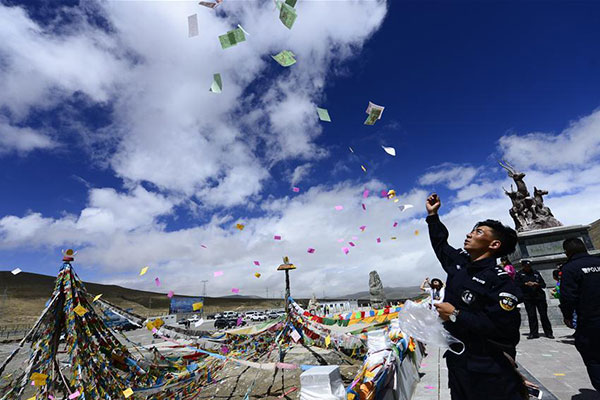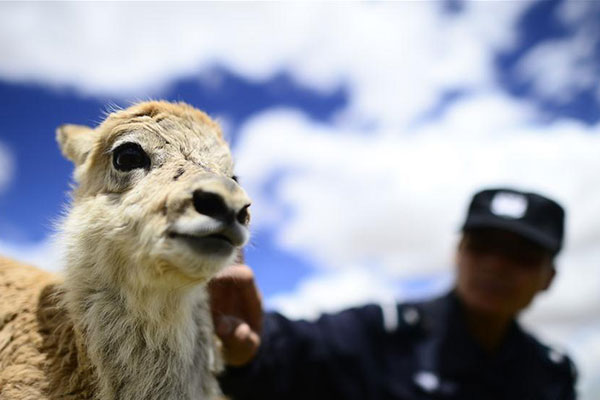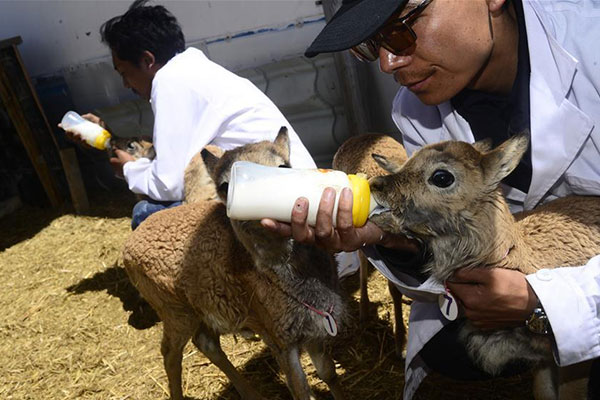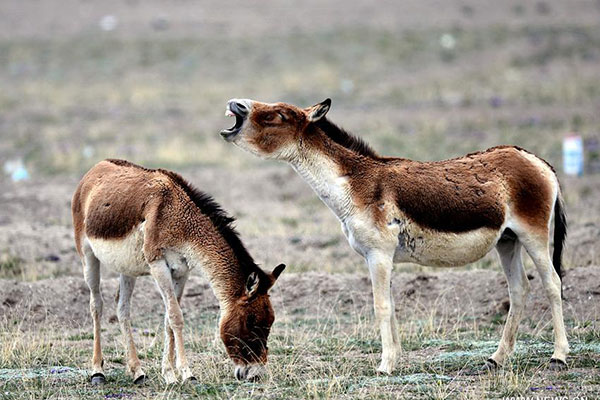Hoh Xil’s recent listing as a UNESCO World Heritage Site bodes well for the source of the Yangtze, Yellow and Lancang rivers, which was established as China’s first national park to pilot environmental-protection reform.
Located on the Qinghai-Tibet Plateau in the northwestern part of Qinghai province, Hoh Xil is famous for its natural beauty and biodiversity.
The nature reserve, comprising a core zone and buffer areas, covers 45,000 square kilometers and is situated more than 4,500 meters above sea level.
It’s China’s most biologically diverse nature reserve. As UNESCO notes, the geographical and climatic conditions have nurtured a unique mix of species. More than one-third of the plant varieties, and all the herbivorous mammals are endemic to the plateau.
Seven species are under national first-level protection. The Tibetan antelope is best-known and most representative of the endangered species.
Its numbers had plunged to fewer than 20,000 by the end of the 1990s due to poaching. However, thanks to years of protection efforts, the population has recovered to more than 60,000, the administration’s statistics show.
Hoh Xil was listed as a provincial-level reserve in 1996. The next year, it was elevated to the national level, and a special organization was founded to protect it soon afterward.

Head of a patrol team Wen Xiu commemorates the martyrs who lost their lives for protecting the environment of Hoh Xil in Yushu Tibetan autonomous prefecture, Northwest China’s Qinghai province, Aug 18, 2017. Hoh Xil has an average altitude of over 4,600 meters, making it an ideal habitat for Tibetan antelopes, kiangs and other animals. It was enlisted as one of the UNESCO’s World Natural Heritages in July 2017. [Photo/Xinhua]

A Tibetan antelope is seen in a protective station in Hoh Xil in Yushu Tibetan autonomous prefecture, Northwest China’s Qinghai province, Aug 15, 2017. [Photo/Xinhua]

Auxiliary police officer Xie Ancheng feeds a Tibetan antelope in Hoh Xil in Yushu Tibetan autonomous prefecture, Northwest China’s Qinghai province, Aug 15, 2017. [Photo/Xinhua]

Head of a patrol team Wen Xiu commemorates the martyrs who lost their lives for protecting the environment of Hoh Xil in Yushu Tibetan autonomous prefecture, Northwest China’s Qinghai province, Aug 18, 2017. [Photo/Xinhua]

Two kiangs are seen in Hoh Xil in Yushu Tibetan autonomous prefecture, Northwest China’s Qinghai province, June 30, 2017. [Photo/Xinhua]
